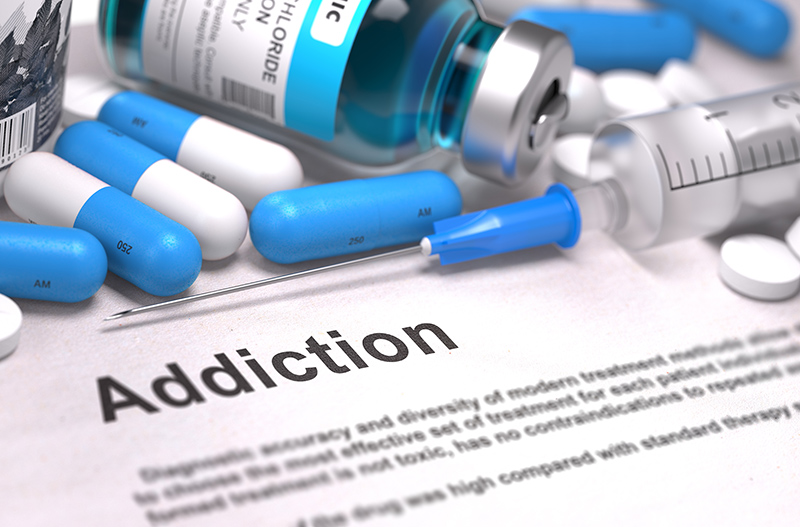Definition • Findings • Treatments • Future
Drug Addiction Defined
Drug addiction is both a chronic and a relapsing disease. So, what does this mean exactly? Chronic because its use is repeated, it extends through time, and is characterized by compulsive behavior, both in the seeking out and using phases, regardless of its many and varied harmful side effects. By relapsing we refer to a persistent malady, one where users in recovery are always at a heightened risk of returning to it, even years after remission (abandonment of drug use). This last consideration is one of the cruxes that has inspired eons of scientific literature: does treatment really work when relapses are so common? The answer, of course, is yes. But —and this is pivotal to any discussion hereafter— a big but… all treatment plans need to be ongoing, flexible, that is, adaptable to patient response and varying conditions, and reviewed with mathematical periodicity based on patient results.
Key Findings & Stats
- $35 Billion is the current annual federal tally for the ‘War on Drugs’ (2020 stats).
- 70,000 drug-related deaths per year since 2000 for a total of 700K.
- 11.7% or 32 million Americans are current illegal drug users.
- 19.4% or 54 million Americans have tried illegal drugs and/or misused prescription drugs in the last year.
- 165 million, that’s 60.2% of Americans, abuse drugs today if we add alcohol and tobacco (both legal, but both very much drugs) into the mix.
- 140 million Americans drink alcohol and almost 60 million consume tobacco products.
- 22 v 17 Percentage gap between males and females that use illegal drugs/misuse prescription drugs.
- Alcohol, then marihuana and pain killers make up the big-three podium for drug abuse.
- Opioids have been at the helm of growing drug-abuse numbers over the past 10 years, reaching its peak in 2012 with 255 million prescriptions.
-
- *All values calculated for people 12 or over.
- **All-American values, that is, for the US population only.
- ***Latest available stats date from 2020.
Treatment: Current & Future Trends
Well, the good news is that drug addiction and abuse are preventable through treatment. Even better news is that the sophistication of said treatments and the facilities providing them has only increased with time… to the point where we can safely say that the solutions on offer today, especially when combined, are a guarantee for current and future success. As long as the need for ongoing and adaptable treatment is understood from the get go.
There is no one-size-fits-all approach. Treatment needs to be held closely to the light of specific patient needs. Here is a list of some of the most tested and proven avenues to addiction cure.
- Detox or the active suppression of addictive stimulants in a controlled and safe environment. This is a starter yet efficient remedy, but needs to be combined with other therapies after the fact as it does not address or cure the underlying causes.
- Cognitive Behavioral Therapy (CBT) is not only used for drug addiction, but food as well, among others. CBT makes patients understand behavior, patterns, and triggers, while rounding up a list of possible solutions through coping skills.
- Rational Emotive Behavior Therapy (REBT) addresses negative, harm-inflicting thoughts. REBT uses rational thinking to enable you to take control, responsibility and accountability, while reducing dependence on external factors.
- Contingency Management (CM) reinforces positive behavior with tangible rewards. It is good for first-timers and relapsing drug addicts.
- Twelve-Step Programs or otherwise —meaning a different count— is group therapy that focuses on recognition, admission of responsibility and the negative consequences and turns group dynamics onto a vital curing force based on ongoing and mutual support mechanics. Alcoholics Anonymous (AA) is a widely popular step program.
- Medication treatment has played a pivotal role when combined with behavioral therapies. Reducing cravings and improving mood is some of the most beneficial aftermath. Some examples: lofexidine, which helps reduce cravings and withdrawal symptoms in opioid addicts, or acamprosate, which helps with alcoholism.
Sources:
https://nida.nih.gov/publications/drugfacts/understanding-drug-use-addiction
https://drugabusestatistics.org/
https://www.webmd.com/connect-to-care/addiction-treatment-recovery/successful-treatments-for-addiction


